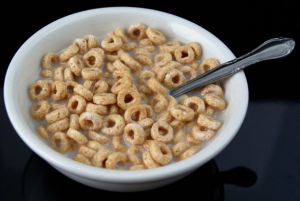We have long known that people with diabetes who skip breakfast have higher hemoglobin A1C levels than those who regularly eat breakfast. A recent study has tried to find out why. They gave 22 people with type 2 diabetes breakfast, lunch and dinner on one day and just lunch and dinner on another day. They kept the calories the same in all the meals. What they found was that when people ate breakfast, they produced more insulin after all the meals, had higher levels of a hormone called GLP1, that helps you to feel full, and had lower post-meal blood glucose levels than on the day they skipped breakfast.
This tells us that breakfast is a great way to help improve blood glucose levels.
For a lot of people, eating breakfast is just difficult. Some are just not hungry in the morning—they have never eaten breakfast and can’t imagine starting now. Others are rushed in the morning and just don’t have time. Well, with some effort, old habits can be changed.
Ideas for really quick breakfasts:
- Peanut butter and banana sandwich on 100% whole grain bread with a glass of milk, OR a latte, OR a couple of string cheeses, OR ½ cup to cup of Greek yogurt (consider Oikos Triple Zero Greek yogurt—it is sweetened with Stevia; or plain yogurt with a little artificial sweetener OR a teaspoon of sugar or honey);
- 1 cup Plain Greek yogurt, or the Oikos Triple Zero + ½-1 cup frozen berries + ¼ cup rolled oats or 3 Tbsp Grape nuts + a handful of nuts.
- A couple slices of cheese OR meat, a serving of 100% whole grain crackers (Rye Krisp, Triscuits, AkMak) and 2 tablespoons raisins OR dried cranberries.
- Hard cooked eggs and crackers and fruit or veggies.
- Whole grain tortilla filled with meat, cheese, and veggies
- Leftover dinner—chicken, sweet potato and veggies; or lasagna and salad; a slice of pizza and salad or cherry tomatoes; black beans and brown rice
If you are in a hurry, with little time, fill a baggie with 1 cup plain Cheerios, ¼ cup almonds or peanuts, and 2 tbsp raisins or dried cranberries (you can always keep some of these in your car or desk drawer).
The goal is to have some protein and carbohydrates along with fruit or vegetable. Eating breakfast has been associated with less eating late in the day or in the evening
Be creative! The important thing is to start eating in the morning, within an hour or two of getting up. You will be surprised, once you get used to eating breakfast, you will really miss it when you don’t eat it!

